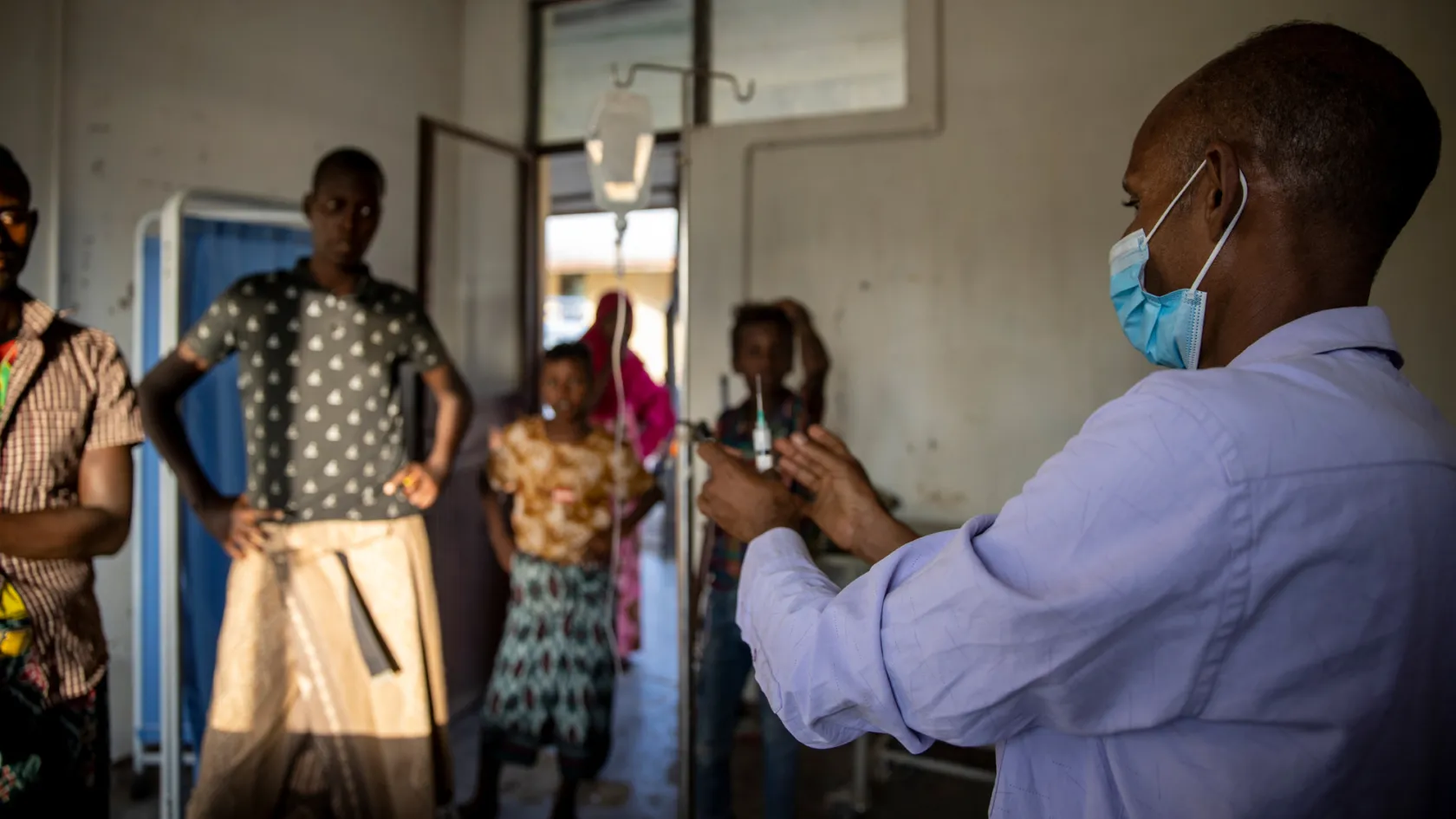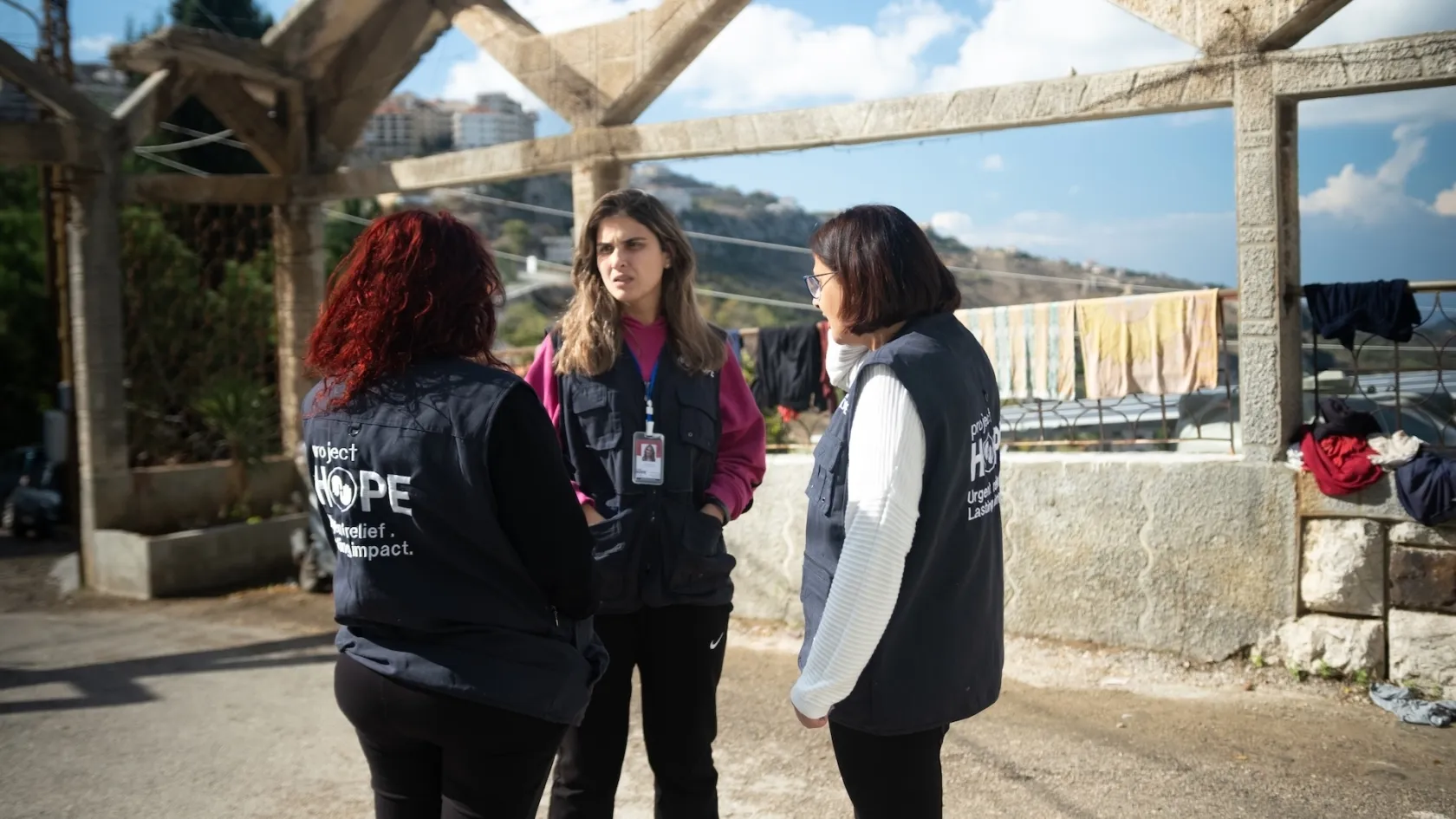Go Inside Two Clinics Project HOPE Rebuilt in Ukraine
Project HOPE’s reconstruction projects are restoring care to previously occupied communities in Ukraine. Go inside two clinics our team rebuilt in Irpin and Zahaltsi.
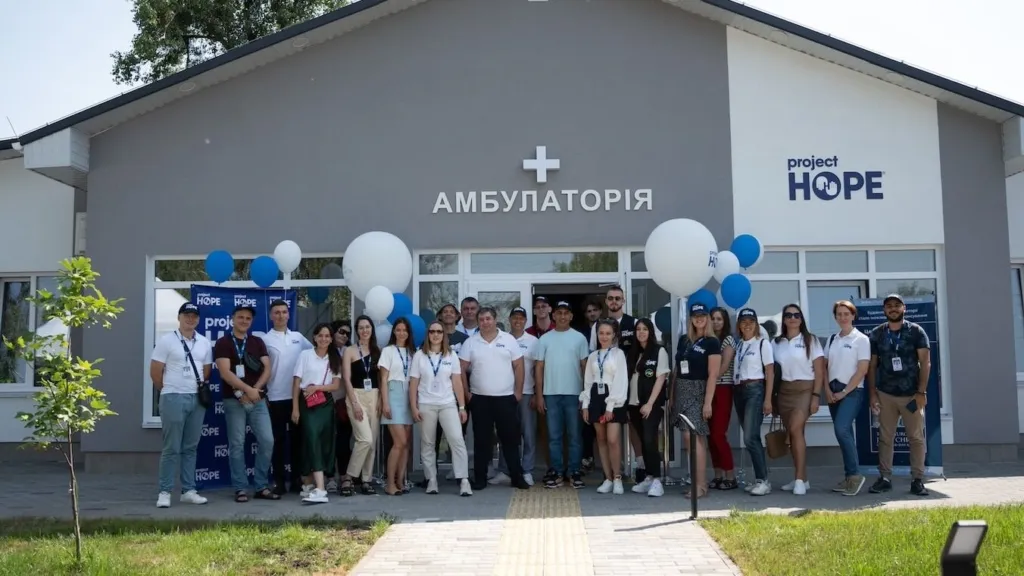
When Russia’s full-scale invasion of Ukraine started in February 2022, the city of Irpin was one of the first to suffer from constant attacks. The local medical facility, Irpin Heart Institute, became a Russian base.
Almost all of the heart institute’s 14 buildings were damaged during the occupation. Roofs were shelled, buildings were hit, windows were smashed, and expensive medical equipment was destroyed.
After the occupation ended, the facility was unable to resume its operations due to the severe damage.
With the support of The Church of Jesus Christ of Latter-day Saints (LDS), Project HOPE began rebuilding the facility in fall 2022.
With winter approaching, Project HOPE completed winterization work first, including repairing the roof and replacing the windows. In spring and summer 2023, Project HOPE completed landscaping and interior decorating, eventually restoring five buildings: the administration building, two medical buildings, and two medical staff dormitories.
By April 2023, all units and departments were opened and now operating at full capacity.
Before the war, the Heart Institute treated an average of 2,500 patients a year from all over Ukraine. Since its reopening, about 500 patients have been treated.
Olena, an accountant at the Irpin Heart Institute, had been living in the facility’s dormitories with her young daughter since 2017. When the invasion began, they had to flee their home.
“It was terrible,” she said. “We hid in the basement and my child was constantly ill. She had a fever, and she was feeling sick all the time. At some point, I realized I had to leave to save my life and the life of my child.”
When Olena returned to Irpin in April, she found the dormitories in terrible condition due to the occupation. “The roofs were leaking, there was water everywhere, and no electricity,” she said.
Although minor changes were made, the residents knew the building wouldn’t survive the coming winter. People started to lose hope. “And that is when you appeared,” Olena said. “It seemed that God heard us and answered our prayers. We couldn’t believe how lucky we were.”
“If it were not for Project HOPE and LDS, we would have lost our home,” she said.
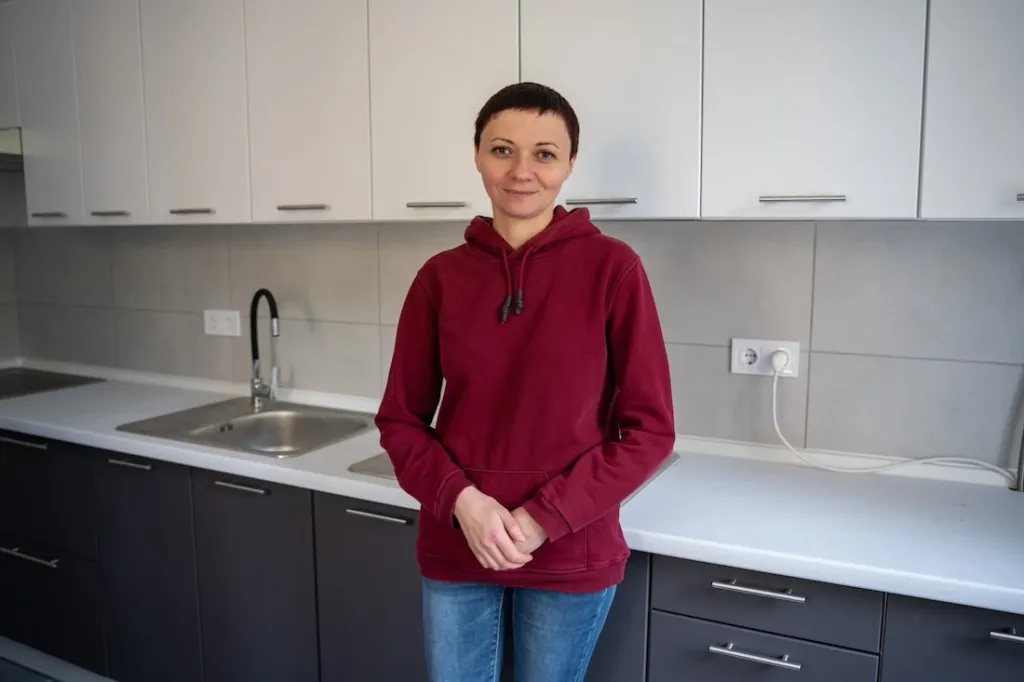
Nadiya, a regular patient at the Irpin Heart Institute, works as a teacher at a primary school in Kyiv. She has been coming to the Irpin Heart Institute for check-ups for the past seven years. All the tests she receives are free. “I love this place,” she said. “The doctors here are amazing. They help me every time and prolong my life.”
After the de-occupation of Irpin in 2022, Nadiya had to skip her annual check-up as the institute was closed due to damage caused by heavy shelling. “I wouldn’t go anywhere else, because this is the only place where I could get the help and care I need,” she said.
This year, Nadiya was finally able to return to her home clinic to recuperate.
“When we arrived and I saw the renovated buildings, I was amazed,” she said. “I even wondered if there was an occupation at all, because the buildings looked better than before.”
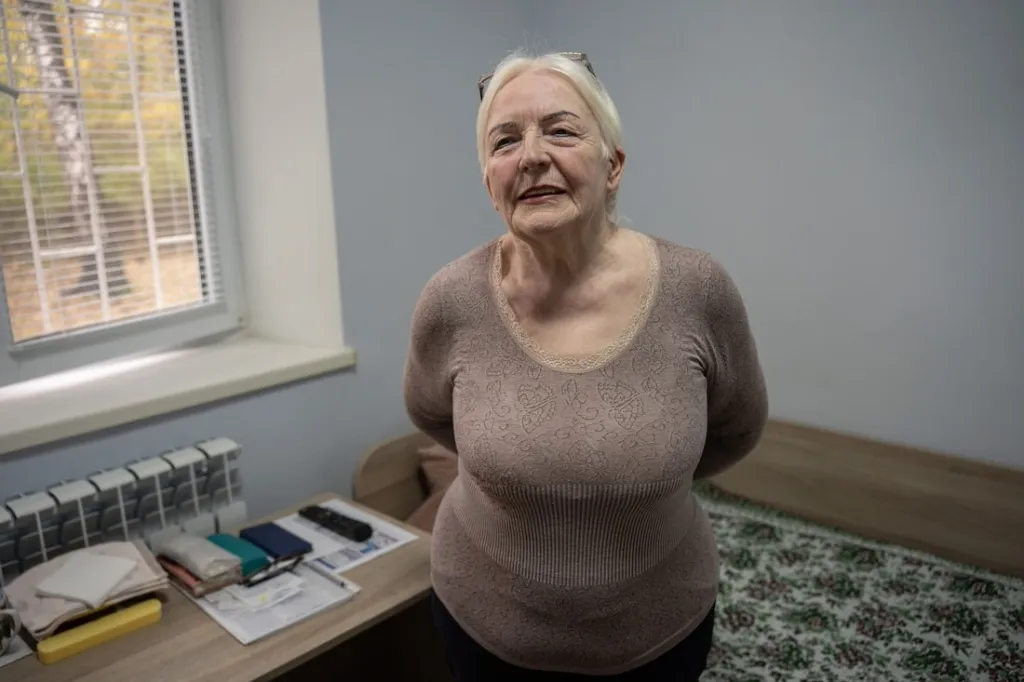
A New Path to Recovery in Zahaltsi
In the village of Zahaltsi, 30 minutes down the road, life is divided into before and after.
In March 2022, Zahaltsi became a gray zone. There wasn’t a day when the village wasn’t attacked. Of Zahaltsi’s 1,900 residents, about 320 people remained, hiding in their basements. Others were forced to leave their homes and live in temporary shelters.
More than half the village’s houses were destroyed or damaged. Among the destroyed buildings were a school, a kindergarten, and a local outpatient clinic. Despite the partial survival of the clinic after the airstrikes, there was only one family doctor available to provide medical services.
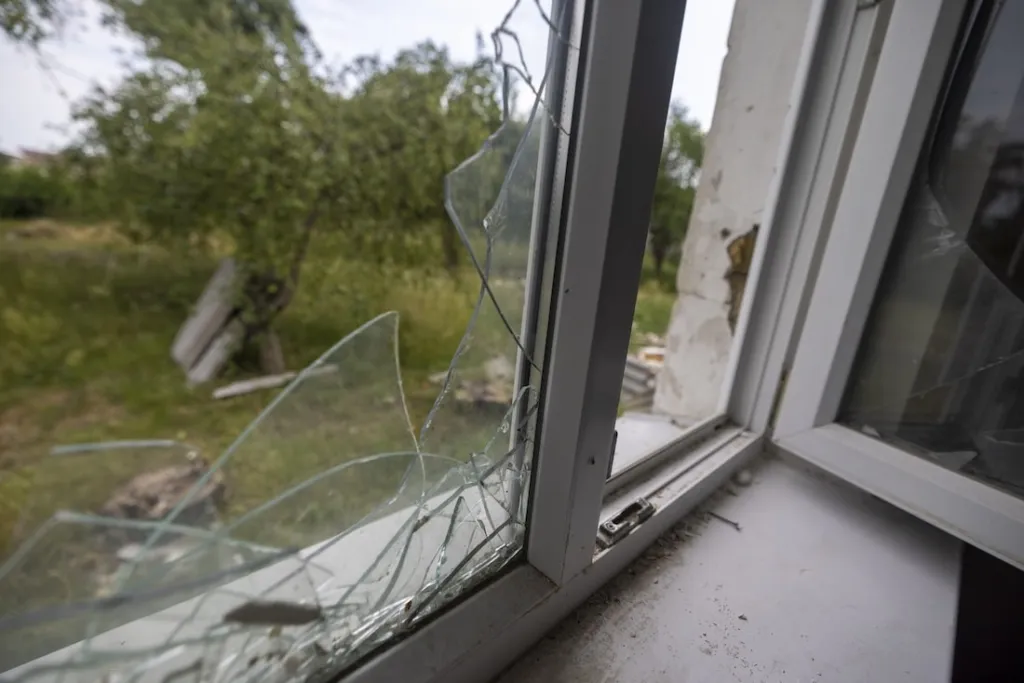
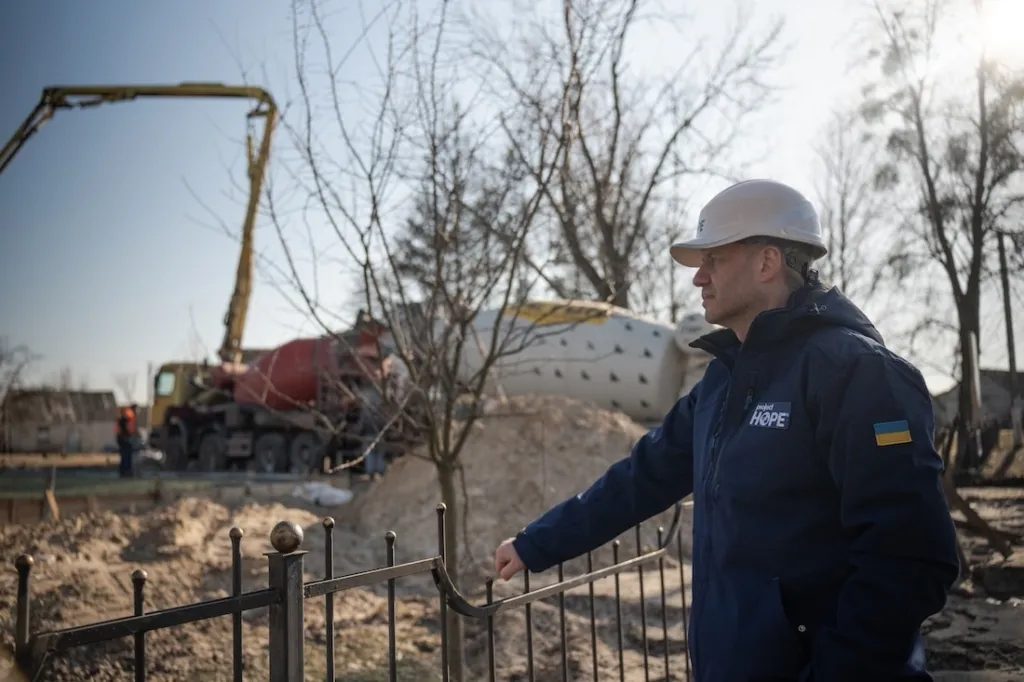
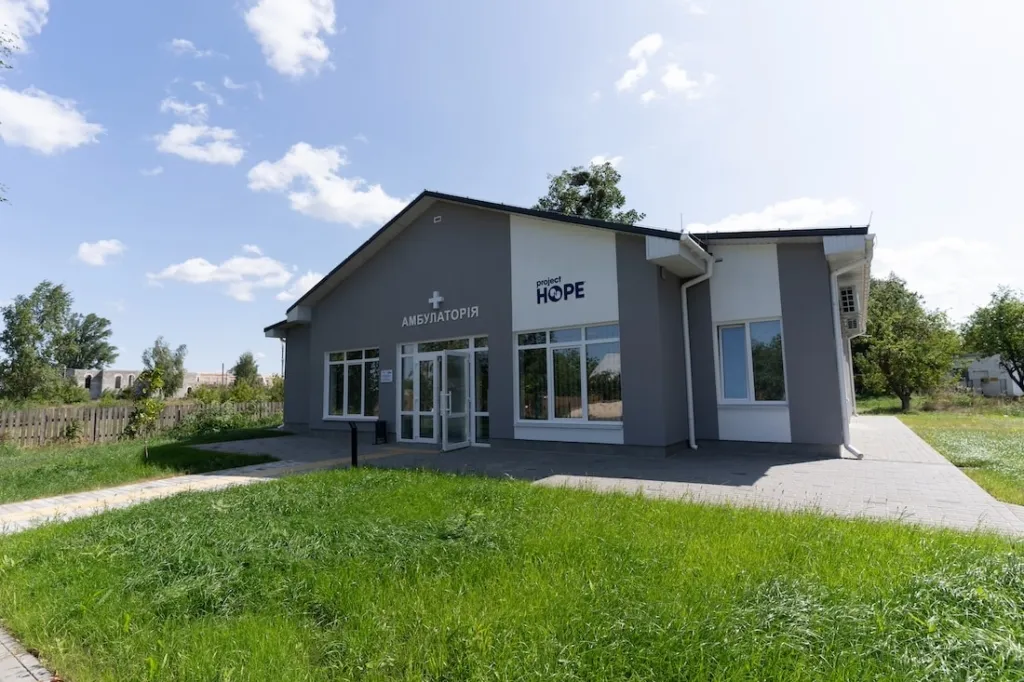
Lyubov, a family doctor from Borodianka, had been through war before. She is originally from Horlivka, in Ukraine’s Donetsk region.
“For me, the war started in 2014, when the Russians invaded my hometown,” she said. “It was hard, but I decided to leave then with my daughters. It was a long way under the constant shelling.”
Lyubov’s friends helped her settle in Borodianka village, and in February 2015, she started to work in the Zahaltsi ambulatory clinic, which is in the next village.
“We happily lived here, but unfortunately, it didn’t last long,” she said. “My family’s life was ruined again after the invasion. We left Borodianka on March 2 when our apartment was destroyed by the shelling.”
There was no evacuation corridor, Lyubov said, and she had to run barefoot.
“When I reached Zahaltsi I saw many people, including children, who were injured while trying to escape,” she said. “I provided first aid, but most of them needed surgeries. We had to spend over a month hiding in the basement. Later, we realized we couldn’t stay any longer and escaped. I was forced to leave Zahaltsi too and moved to the western part of Ukraine.”
A few months after the de-occupation of the Kyiv region, Lyubov returned to work, using one tiny room to see the patients in the old ambulatory. She dreamed of having her own space and better conditions to support those in need.
Project HOPE, with funding support from The Church of Jesus Christ of Latter-day Saints, built a new outpatient clinic for the almost 5,000 residents of Zahaltsi and surrounding villages. The facility is inclusive, modern, comfortable, has rooms for two family doctors, and is supplied with all the needed equipment, including a laboratory. Construction lasted for six months, and at the end of August, the clinic welcomed its first visitors.
Lyubov felt overwhelmed and grateful on the clinic’s opening day. “This is such a big difference,” she said. “It’s a gift not only to us, the medical team, but to the whole community. When people come and see all that has been done, their mood immediately lifts. And when your spirits are up, it’s easier to recover.”
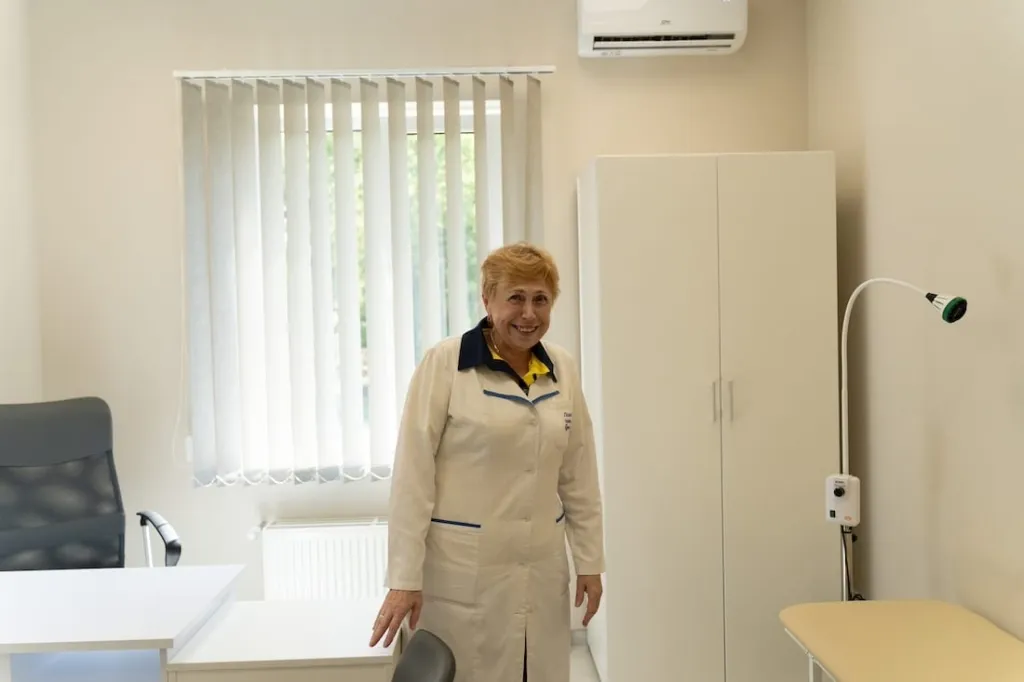
Liudmyla, a lifelong resident of Zahaltsi who works as a janitor at the local school, recalled how frightened and uncertain she felt on the first day of the full-scale invasion. “I remember the only thing I felt was fear,” she said. “We heard the explosions, and they targeted everything they could reach, including civilian buildings and the kindergarten.”
Liudmyla was lucky enough to escape Zahaltsi with her family before the occupation and returned home in April. She has already used the new clinic several times.
“I have a father who is disabled and uses a wheelchair,” she said. “The new building is comfortable and inclusive. It is just nice to be there. It is the highest standard our village has ever seen. It also saves us time and money, because before we had to travel to the hospital in another city.”
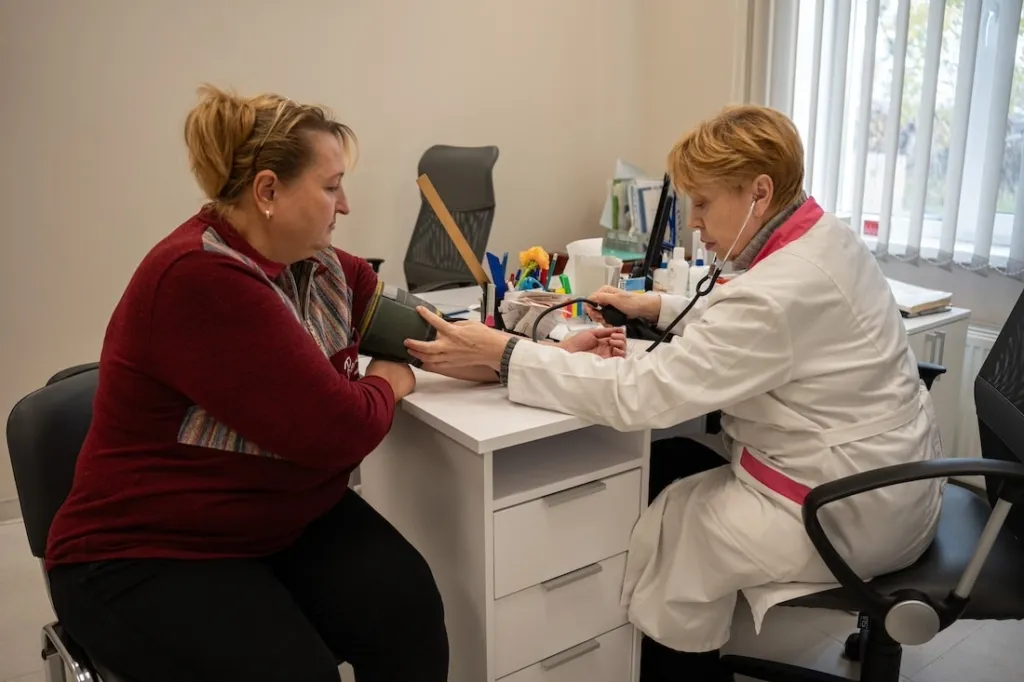
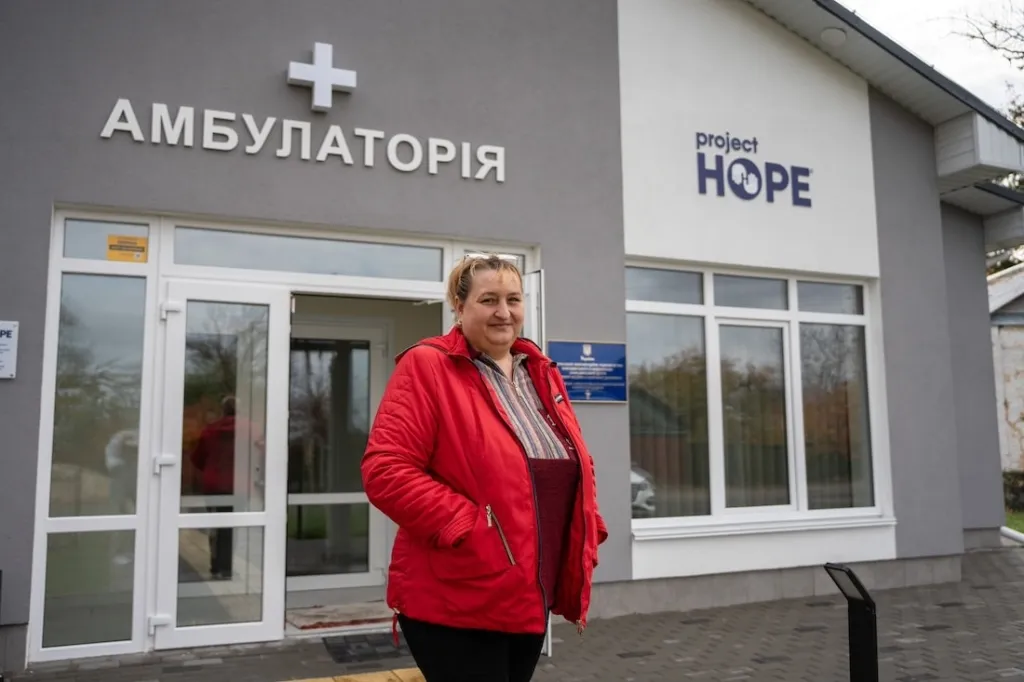
Natalia and her daughter, Katya, came to the clinic on the same day because Katya was not feeling well and had a fever.
“I’m very pleasantly surprised,” Natalia said. “This is the first time I’ve used the services of the new outpatient clinic since it opened, and it’s incredible. Before, we had to travel to private clinics and wait in long lines, and you know how hard it is when your child is sick. This clinic is a great gift.”

While the battles of the past may never fully fade, the people of Zahaltsi are moving forward, rebuilding their lives, and believing in a brighter future. The new outpatient clinic will serve the Zahaltsi village and its neighboring communities for a long time. Beyond that, it will also be a reminder for the residents that despite everything, there are good things to believe in.

